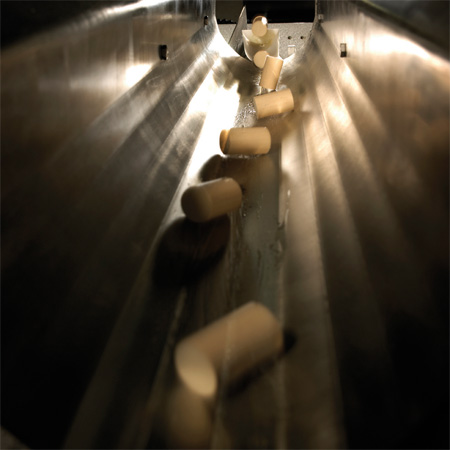France Narbonne
Belgian businessman and wine connoisseur Gert Noël got the idea to create an alternative wine closure at a family party, after opening several bottles of wine that had been ruined by cork taint.
Applying more than 40 years of experience manufacturing products derived from the cellular extrusion of synthetic materials, Noël and his son Marc decided to create a wine closure based on foam extrusion technology. The team spent 6 years in research and development before introducing the first Nomacorc closure. Major international wineries quickly saw the product's potential as a solution to the pervasive problem of cork taint in wine.
Since then, Nomacorc has become world's largest producer of alternative wine closures, providing winemakers, wine industry professionals and consumers with the peace of mind that their wines will be enjoyed exactly as the winemaker intended.
 SommelierS International: Tell me about the origin of Nomacorc.
SommelierS International: Tell me about the origin of Nomacorc.Yvan Chaussard: Nomacorc is a Belgian company created by Marc Noël in 1999 and built on a know-how called co-extrusion manufacturing process. Each closure consists of a foamed inner core layer and a flexible outer skin. This production method creates closures that are highly uniform and yield consistent oxygen transfer rates. They look and feel like a natural cork, while addressing the problems of cork taint, breakage, crumbling, and inconsistent wine preservation. The company has three factories: one in North Carolina, in Zebulon, another in Thimister-Clermont, near Liege (Belgium), and the last since October 2007, in Shandong Province, northeast China.
SI: During the past 10 years, what was the evolution of the company, particularly in terms of cork?
YC: In 1999, when the company was created, the sector had many problems with cork-based stoppers (cork taste, organoleptic alterations). Nomacorc’s dedication to quality and innovation as well as the scientific study of post-bottling chemistry and oxygen management led to the establishment of state-of-the-art sensory laboratories and the implementation of a cutting-edge technology allowing to create products of a very high homogeneity, which protect the wine and guarantee its gustative continuity from bottle to bottle.
The company very fast turned to oenology since the corking is an oenological act. Of this science, we know generally many things. However, on post-bottling concerns, very little information is available in the oenological bibliography. It was thus necessary to recruit oenologists' team and to set up research works. Nomacorc has built strategic relationships with world-renowned institutions such as the Australian Wine Research Institute (AWRI); University of California at Davis Department of Viticulture and Oenology; the Institut National de la Recherche Agronomique (INRA), France; and the Geisenheim Institute, Germany in order to better understand the post-bottling chemical reactions of the wine. We are now able to tailor permeability to a sensory profile thanks to the launch of a new range called Select Series.
SI: Tell me about the differences between Nomacorc’s and other synthetic corks.
YC:In the industry of synthetic closure, you have three technologies: the first is called the injection-molding; the second is the mono-extrusion and the third co-
extrusion. Nomacorc produces corks made only by co-extrusion
 SI: What is our latest innovation?
SI: What is our latest innovation?YC: Nomacorc is fortunate to have a clean industry without rejections in the atmosphere. Compared to other industries, in particular that of the cork, we are little consumer of water and energy. Furthermore, by its composition, the co-
extruded cork Nomacorc is recycled and recyclable. When we say recycled, it means that all waste is recycled for the production of other manufactured products, plastic pallets, for example, or baby car seats. It is recyclable since we have a partnership with the Federation 'A cork, a smile', which groups several associations and has national coverage. It is in charge of collecting synthetic corks for recycling.
